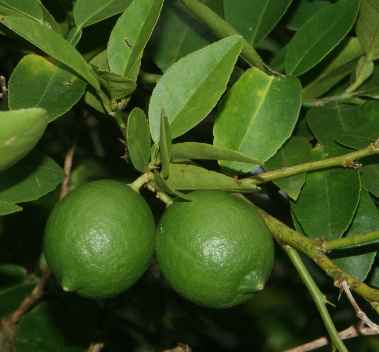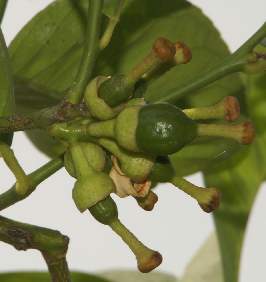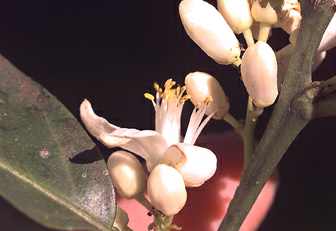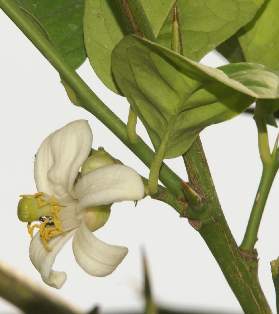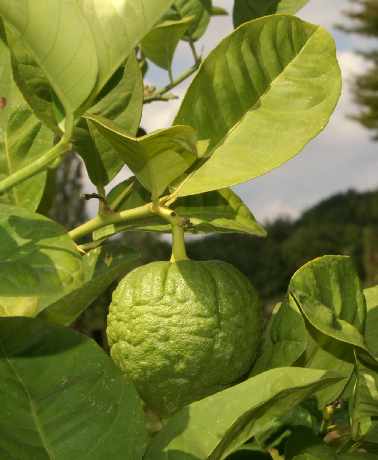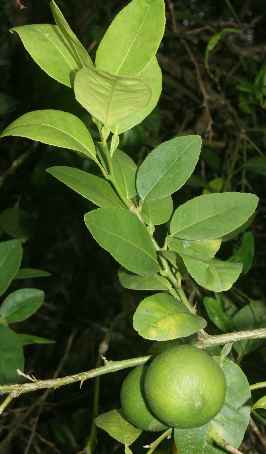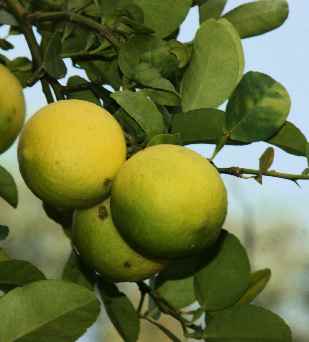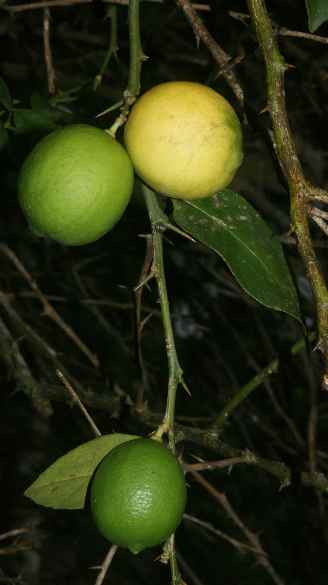
|
| Ripe and unripe limes |
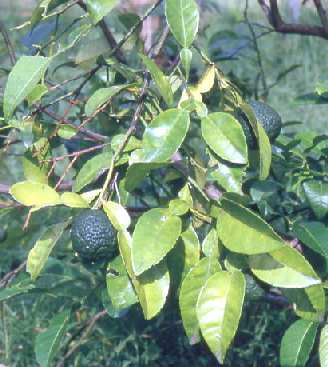
|
| Lime shrub bearing unripe fruits |
In tropical Asia, lime juice is often used as a basis for fresh-tasting sauces. Vietnamese nuoc cham [nước chấm] is an everyday sauce simply made from lime juice, sugar, the ubiquitous fish sauce (nuoc mam [nước mắm]) and a dash of garlic and fresh chile. Nuoc cham is served as a table condiment to almost every South Vietnamese food. Depending on the mood of the cook, the flavour of that sauce will be dominated either by the salty fish sauce or by the acidic lime juice, but the other flavours will remain in the background. A similar, yet less pungent sauce is Cambodian tik marij made from ground pepper, salt and lime juice, but without fish flavourings.
In Southeast Asia, also the zest of local Citrus species is used for cooking; in general, ordinary limes make a good substitute. Thais and Malays sometimes add whole fruits of kaffir limes to their curries, and on the Philippines, the local kalamansi (Citrofortunella mitis, also called Citrus mitis) are cultivated for both juice and peel. Especially the latter can easily be substituted by ordinary limes or, in the worst case, lemons.
A unique kind of food depending completely on the acidic quality of lime juice is ceviche (also spelt cebiche or sebiche), a common method to prepare very fresh fish in Polynesia and Latin America. Raw fish is marinated with ample lime juice overnight and, on the next day, seasoned with fresh chiles and coriander leaves (or long coriander); further ingredients are onion and tomatoes. The recipe appears to be of Polynesian origin, but is today often found along the Pacific coast from México to Perú, and on the Caribbean islands. To my taste, Caribbean chiles (habaneros or Scotch bonnets) are best for this purpose; yet, Mexican recipes usually prescribe green jalapeños or the slightly hotter serranos. In Perú, the ají amarillo chile is often used for ceviche, but some recipes suggest local habanero-type chiles.
The trick behind ceviche is that proteins denaturize in
an acidic medium, as they do at high temperatures; therefore, there is an analogy
between coing and treating with acids, and the fish the fish may
be considered cooked
by the cold but heavily acidic lime juice. For this reason, ceviche cannot be directly compared to the Japanese versions
of raw fish (see wasabi), in which the protein is
not denaturized at all.
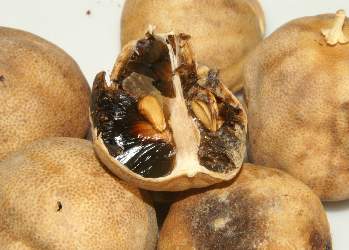
|
| Dried limes |

|
| Dried lime |
In the countries bordering the Persian Gulf, ripe limes are boiled in salt water and sun-dried
until their interior turns dark (black lime
, often also incorrectly
black lemon
). The resulting spice is called loomi
or lumi [لومي]
in the countries of the Arab peninsula; in Iran, it is known as
amani or omani [عمانی],
named after the main production country, Oman. Whatever called, these black
limes are often used to impart a distinct citrus odour and a sour tang to
legumes and meat dishes. The limes are either crushed or pierced with a skewer
before usage, and then added to slow-simmering foods. Examples are
majboos, an aromatic rice dish prepared in the Gulf States
(see rose), and the Irani herb sauce
ghorme (see fenugreek).
In Iran and
Northern India, powdered loomi is also used to flavour rice
(as an alternative to sumac); it goes best with
long-grain Indian basmati [बासमती] rice. Lime (or lemon) juice is contained in
the Yemeni spice paste zhoug (see coriander).

